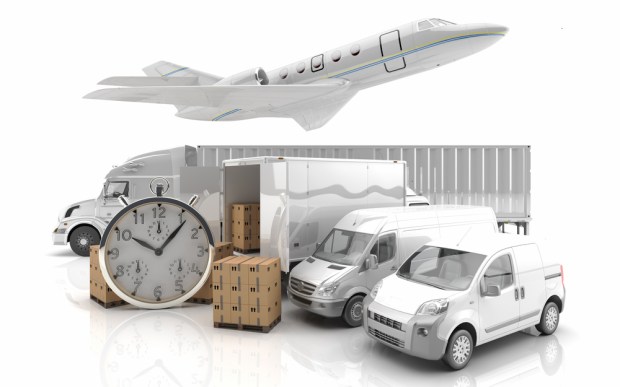U.S. Bank Mobilizes Fleet Management For The Bottom Line

Transport companies make their margins on efficiency and fuel prices. New features bowing with U.S. Bank’s Voyager Mobile App aim to help fleet managers and drivers keep a real-time, app-driven eye on the bottom line.
“There’s an app for that,” promises the familiar technology refrain. In fleet management, an industry that, at its heart, relies on miles logged and gallons burned to measure efficiency, the apps’ focus on both — crucial ones to fleet managers — serves the bottom line.
To that end, U.S. Bank has announced that its Voyager Mobile App, which is tied to the Voyager Fleet Card and helps identify service locations that take the card (as well as hours at those locations and services offered there, such as car washes), has some upgraded features.
In a release last week, the company said that its latest offerings hone in on efficiency, marking the best path to final destinations based on the lowest-cost fuel locations on a given route. Through a mobile app, one that is available for both Android and iOS, reports can be printed, along with maps, that can be used by drivers with a preference for more tactile options.
The data itself is fed through thousands of fuel and service stations that make up the Voyager Network that is owned by U.S. Bank. The data feed is two-pronged, as a trip planning tool that is embedded within the app focuses on route efficiency, while a price optimization feature can keep drivers mindful of the lowest-cost fuel locations, winnowed by brand or fuel type.
In an interview with PYMNTS, Ramel Lindsay, fleet group product manager at U.S. Bank, said the upgraded app is one that has been expanded to include “not just the location of” refueling options “but the expense, too.” The criteria works within certain defined distances, ranging from, say, three to five miles of a given route.
The solution is flexible enough to be reconfigured in real time and has information fed in a crowdsourcing manner so that vital changes can also be passed along as situations warrant. In one example, Lindsay offered up an emergency setting: During a hurricane, local notices about gasoline or diesel availability may be out or stating in blanket terms that gas stations are not operating, but within the Voyager Network, such communication is more reliable and accurate “on the ground.” Lindsay noted that new ground covered by the app includes audio voice prompts that can help direct drivers along their routes and are adaptable to both central hub settings and longer trips. Lindsay stated that settings in the app can be set to ensure that drivers do not go more than a quarter mile off their routes.
Upcoming features? Lindsay told PYMNTS that the eventual roadmap would include scorecard functionality to compare fuel efficiencies on a driver or route basis, with quantitative details on what has been saved on a route versus what could have been saved with other choices.
By way of one example provided to PYMNTS, U.S. Bank worked with a large (unnamed) transportation provider with a fleet of 2,100 vehicles around the country. The team behind the Voyager app examined fuel transactions based on Voyager card swipes for a certain period of time. That activity was then checked against prices at stations in the vicinity of those swipes.
The results? Drivers didn’t always go to the cheapest locations; in fact, oftentimes, their choice was significantly more expensive than they could have gotten just down the street, the executives told PYMNTS.
Had they bought the least expensive fuel in a reasonable radius (13 miles) for all 2,100 vehicles consistently throughout the year, the analysis showed, this firm would have saved about $700,000 versus the most expensive option. Even with a much smaller three-mile radius, there was still a potential savings of $221,000 left on the table — money that would otherwise have flowed directly to the bottom line.
Separately, Vlad Collak, president and CEO of Ignite Media, tech partner on the Voyager Mobile App, said that the data provided through the Voyager Network (the firm has focused on serving the oil and gas and transportation sectors, among others) can be scaled to sustain information about the number of transactions and additional fuel options at stations and can also be ready to scale beyond U.S. borders, such as in Canada and Mexico — logical outgrowths of transport activity.
Further roadmap developments, said the two executives, could include generating single-use data numbers for transactions that may be well off-route or may be at locations where the Voyager Card is not accepted.
